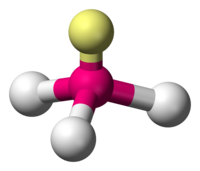Question #d4c10
1 Answer
The order is
Explanation:
The most common intermolecular forces in pure substances are, in decreasing order of strength:
We get an idea of the strengths the forces by looking at the bond electronegativity differences
For
The strongest intermolecular forces are ion-ion attractions, so
Helium is a noble gas. It does not form ionic or covalent bonds.
The only intermolecular forces in helium are London dispersion forces.
Helium is last in the list.
Both

For
For
Thus, we would predict the compounds to have about the same polarities, with
However,
The reason is that the lone pair itself contributes a dipole to the molecule.

In
Thus,
The order of polarity for all the compounds is

